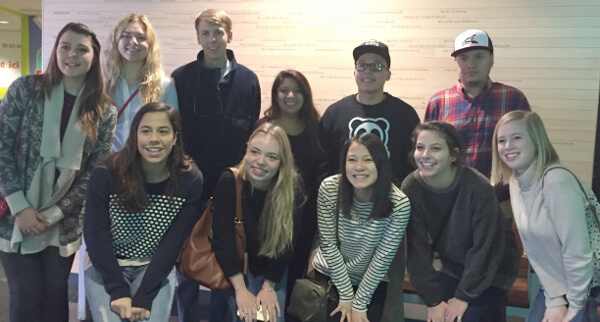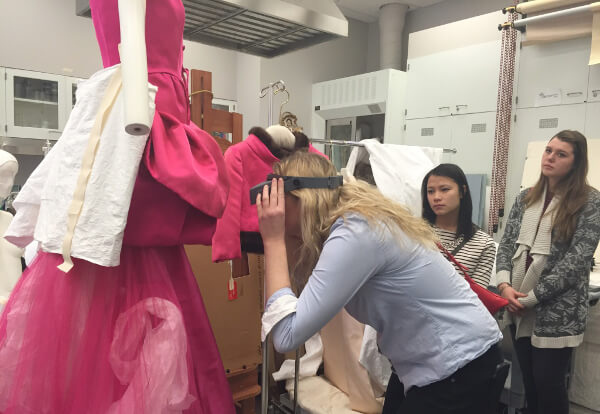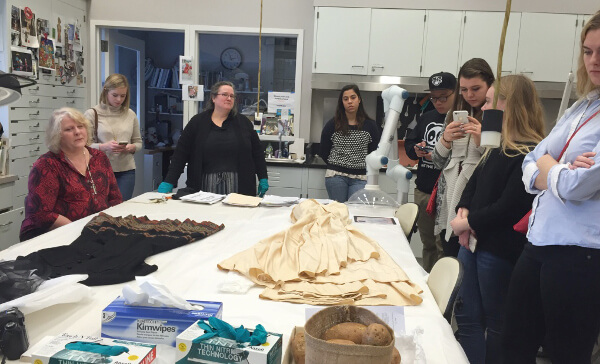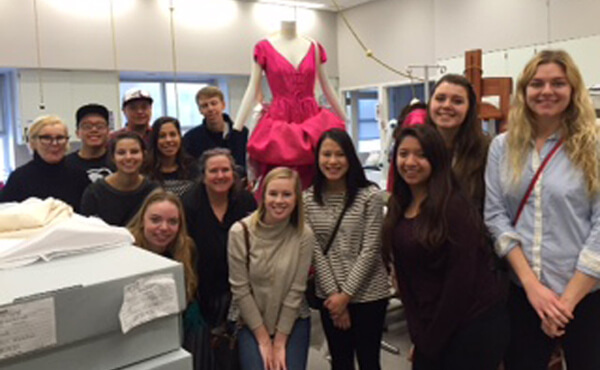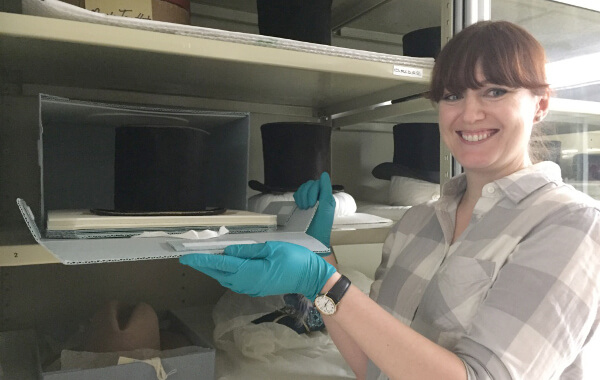The Spring 2016 Denison Seminar “The Historic Costume Collection at Denison University” is an interdisciplinary course that bridges Theater and Art History and Visual Culture.
In it, we are examining both the historical and theoretical meaning and significance of how we dress and how that signifies identity on culture. But, the class also has a significant hands-on dimension: we are also learning how to catalogue, care for, and conserve garments in Denison University’s small but amazing collection of historic clothing experience of the care, conservation, and cataloguing of the small costume collection currently curated by Professor Cindi Turnbull. The seminar is taught by professor Turnbull and Professor Joy Sperling in Art History and Visual Culture.
In this class we are also visiting three other costume collections around the country. We will have the opportunity to go behind the scenes to talk to curators, collections managers, and conservators, and to see them at work. We have already visited the Chicago History Museum, where we actually saw Abraham Lincoln’s top hat and Michael Jordan’s basketball shoes. Later in the semester we will also get a behind the scenes tour of the Drexel University Costume Collection, Philadelphia, and the famous Ohio State University Costume Collection. Professors Sperling and Turnbull said “it is truly a privilege to teach at a college where we can not only teach our students both theory and practice, with hands-on experience as in this class, but we are are incredibly lucky to be able to take them and show them first hand how other collections are cared for. The experience, for them, is invaluable.”
The museums we are visiting are different sizes with different sizes and kinds of collections, different budgets and different staffing store and care for their historic clothing collections. Back at Denison, each of us chose one garment that particularly interests us from the costume collection at Denison—one of us has chosen an historic wedding dress from the 1910s, another a World War I uniform, and others have chosen dresses or coats from the 1950s, 1960s, 1970s, or even 1980s. We are doing primary and secondary research to place our garment into a historical, political, cultural, and gendered context, and then we are describing its meaning, its use, and the kind of person who might have worn it originally. Additionally, we will make a detailed condition report on the garment to evaluate how it should be stored, preserved, or even conserved properly according to the standards that we have learned about this semester. Each of us will make an individual presentation to the class as well as writing an extensive research paper on the condition, conservation, and significance of our garment. Hopefully by the end of the semester we will have some ideas about how the costume collection at Denison University might be stored and preserved and will be able to present our findings in a joint document.
One student Student Sara Lyons, noted: “This seminar has provided me with the opportunity to learn about the social and historical implications of costumes. I have been able to learn how social, political, and economic contexts seep into fashion and are expressed in what we wear, and now I have a completely new outlook on the way people dress.”
